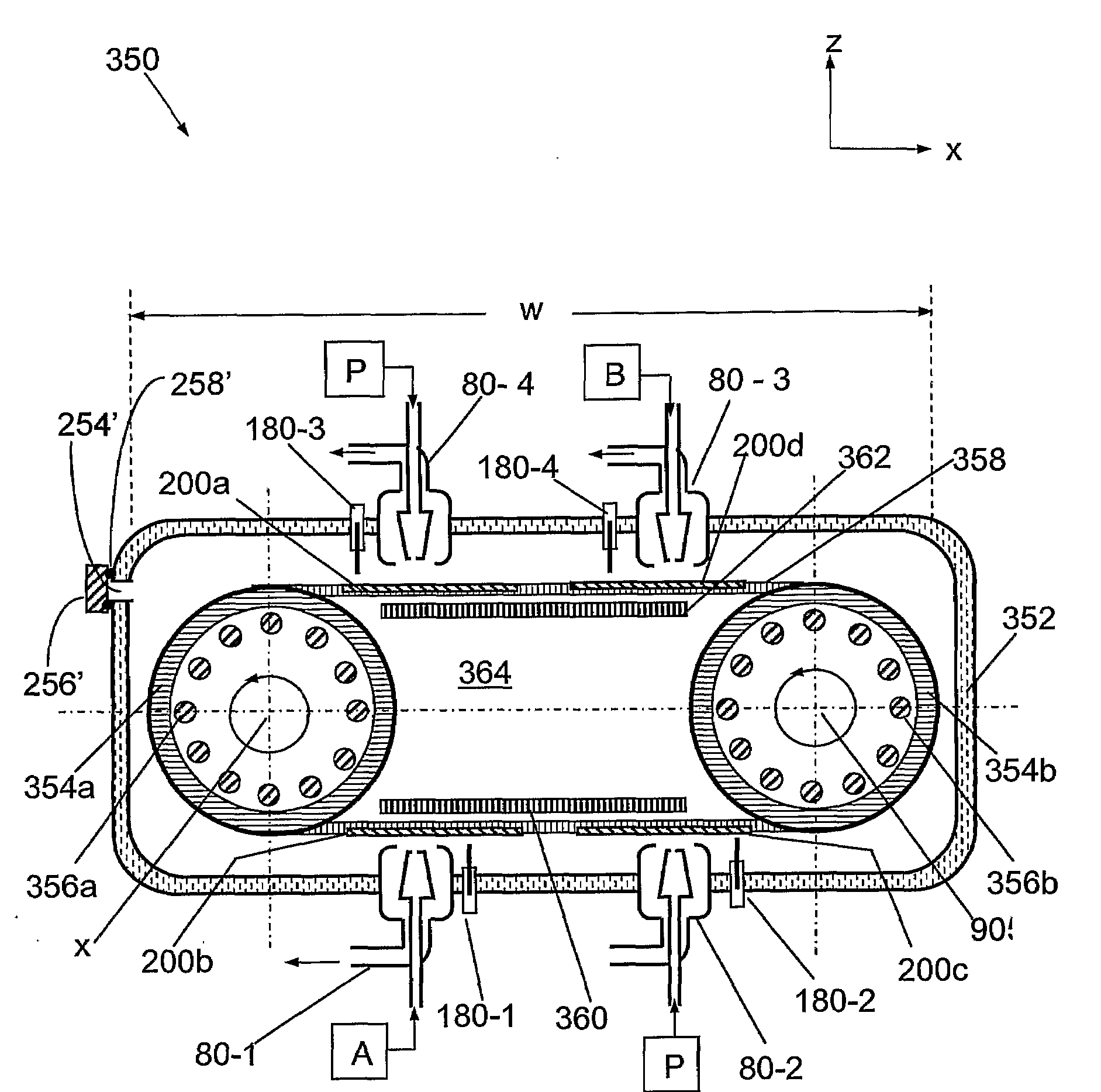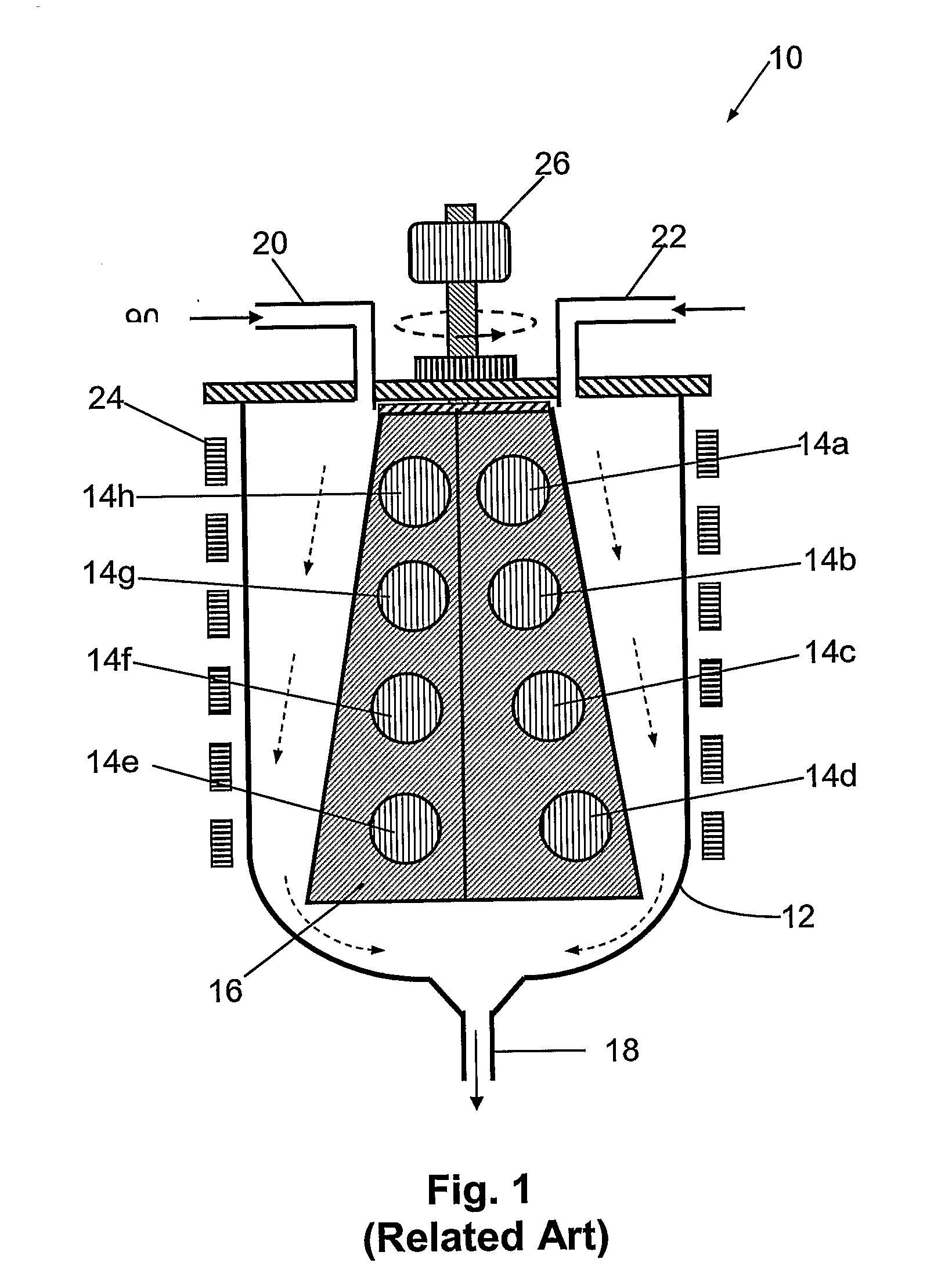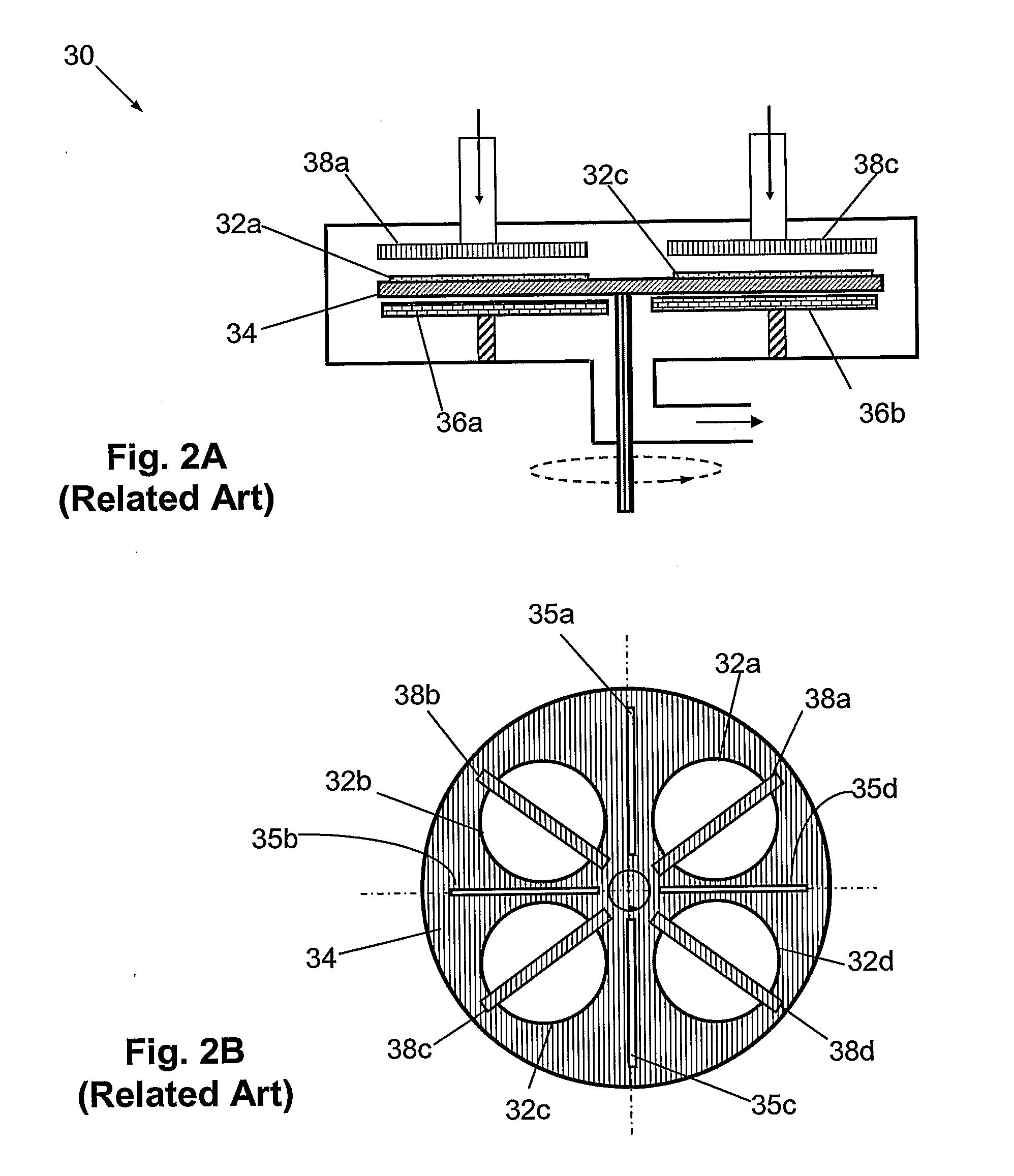Apparatus and method for large area multi-layer atomic layer chemical vapor processing of thin films
a technology of atomic layer and thin film, which is applied in the direction of chemical vapor deposition coating, metal material coating process, coating, etc., can solve the problems of high quality and conformal thin film in narrow confinement, sub-micron geometrical features, and inability to deposit high quality and conformal thin films in narrow confinement, etc., to achieve the effect of facilitating the holding of substrate, high speed and high ra
- Summary
- Abstract
- Description
- Claims
- Application Information
AI Technical Summary
Benefits of technology
Problems solved by technology
Method used
Image
Examples
example — 1
Example—1
Atomic Layer Deposition of Copper
[0101]Copper films can be deposited with one monolayer precision by employing cuprous halide with general formula CuX (X═F, Cl, Br and I) generated in-situ within the inner linear injector of the first composite nozzle, as described in the U.S. patent application Ser. No. 10 / 975,169; filed Oct. 27, 2004. The cuprous halide gas is subsequently combined with active hydrogen species (e.g., ionic species H+, free radicals H. and activated H2*) derived from H2 plasma. Alternately, CuX on the substrate surface can be combined with hydrogen free radicals (H.) obtained from a radical source connected to the inner linear injector of the second composite nozzle. For copper monolayer deposition process, the first and third composite nozzle each employs copper halide precursor while the second and fourth composite nozzles both employ species derived from hydrogen plasma or hydrogen free radicals to speed up the overall process.
[0102]The overall reaction...
example — 2
Example—2
Deposition of Copper Indium Diselenide Alloy Films
[0104]Thin films of Copper Indium Diselenide can be deposited in ALD mode by employing one of the precursors of copper as described in example−1 above, which is combined with the appropriate precursor of indium such as halide of indium e.g., indium trichloride [InCl3] which can be generated in-situ within the linear injector [ref. U.S. patent application Ser. No. 10 / 975,169 filed Oct. 27, 2004], tri-methyl indium [(CH3)3In], di-methly indium chloride [(CH3)2In—Cl], indium hexa-fluoro-pentanedionate [C15H3F18O6In] among others. The precursors of indium are not limited to the ones listed above. The preferred selenium precursor is H2Se gas which can be generated in-situ from solid selenium and hydrogen as described in the U.S. patent application Ser. No. 10 / 975,169 filed Oct. 27, 2004. The overall chemical reaction for synthesis of copper indium diselenide thin films can be given as (for sake of simplicity the reaction is shown...
example — 3
Example—3
Deposition of Copper Indium (Gallium) Selenide (CIGS) Graded Composition Films
[0106]Thin films of varying composition with thickness can be deposited in ALD mode by employing the ALCVP reactor configurations as described in FIGS. 17 and 18. The sources for copper and indium are as described, but are not limited to the ones, above. These can be combined with the appropriate gallium sources such as, but not limited to, tri-ethyl gallium [(CH3)3 Ga], diethyl-gallium chloride ((C2H5) Ga—Cl], and H2Se with N2 as the purge gas. During the ALD / CVD deposition process of Copper Indium (Gallium) Diselenide films, the flow of indium is increased that of gallium is proportionately decreased while maintaining the flow of H2Se. Such a process sequence in ALD or in CVD mode is of significant valve to develop graded optical gap, large area and high quality solar absorber materials in which the composition and optical band-gap of the material can be tuned with respect to the film thickness....
PUM
| Property | Measurement | Unit |
|---|---|---|
| acute angle | aaaaa | aaaaa |
| width | aaaaa | aaaaa |
| thickness | aaaaa | aaaaa |
Abstract
Description
Claims
Application Information
 Login to View More
Login to View More - R&D
- Intellectual Property
- Life Sciences
- Materials
- Tech Scout
- Unparalleled Data Quality
- Higher Quality Content
- 60% Fewer Hallucinations
Browse by: Latest US Patents, China's latest patents, Technical Efficacy Thesaurus, Application Domain, Technology Topic, Popular Technical Reports.
© 2025 PatSnap. All rights reserved.Legal|Privacy policy|Modern Slavery Act Transparency Statement|Sitemap|About US| Contact US: help@patsnap.com



